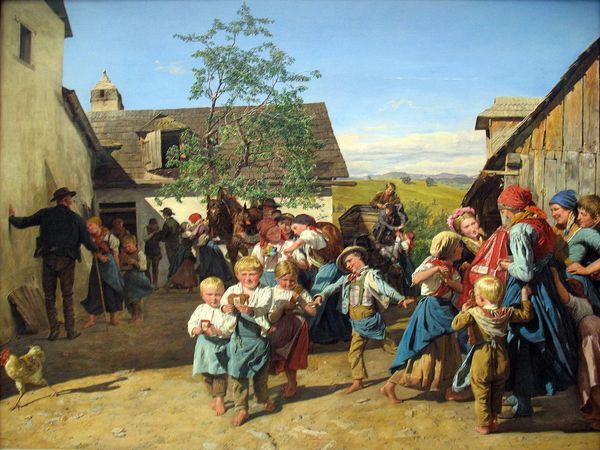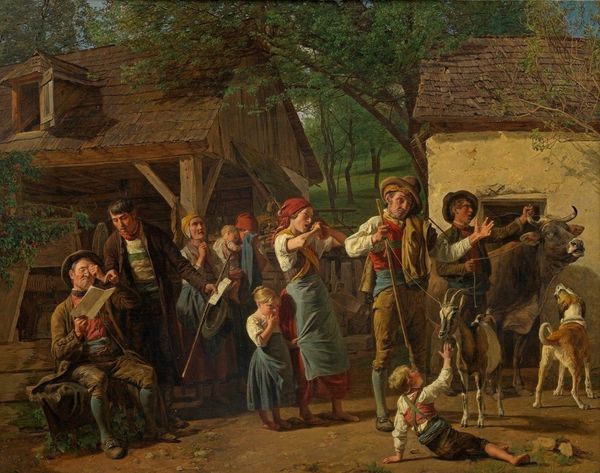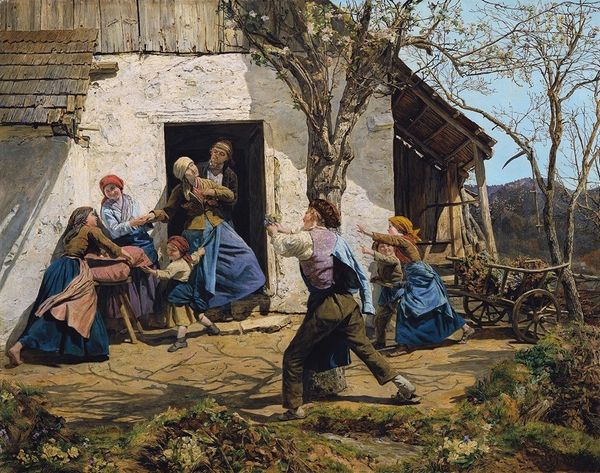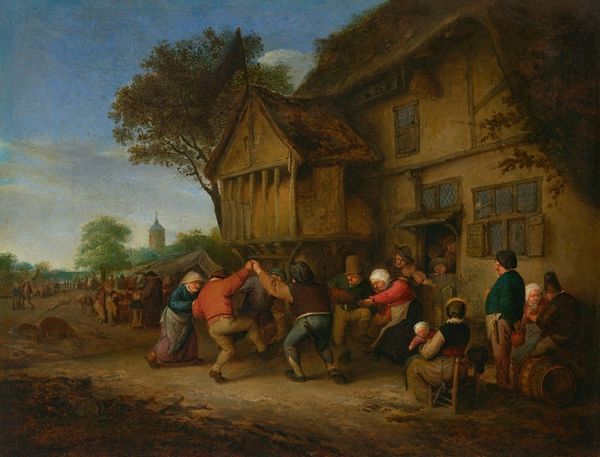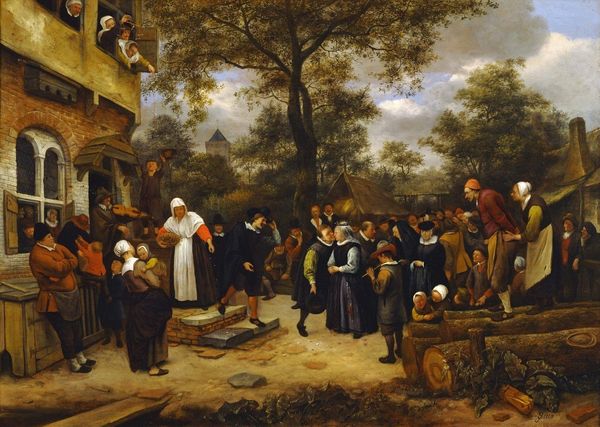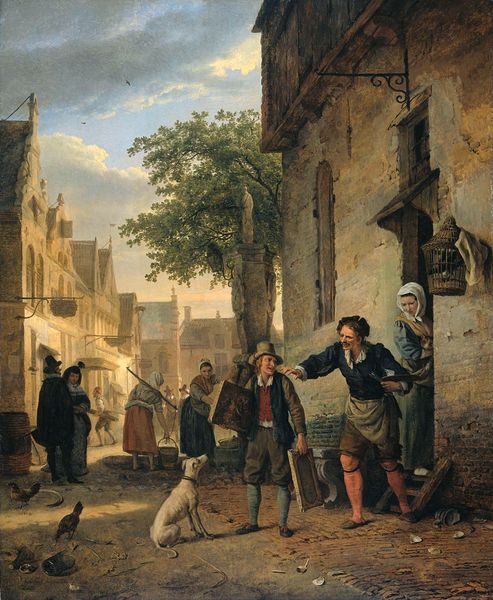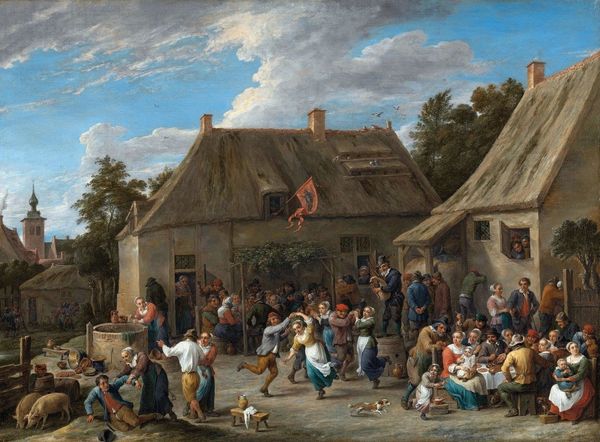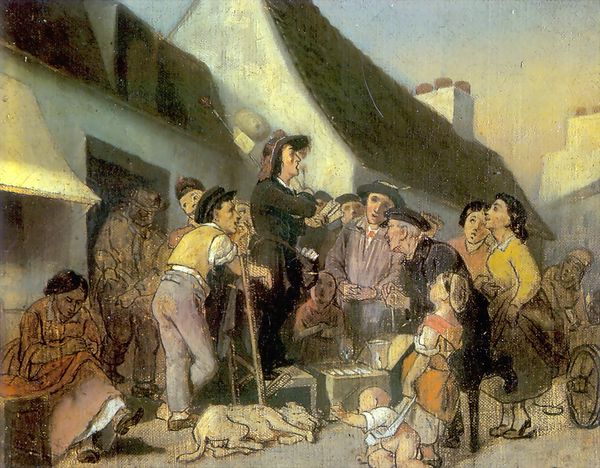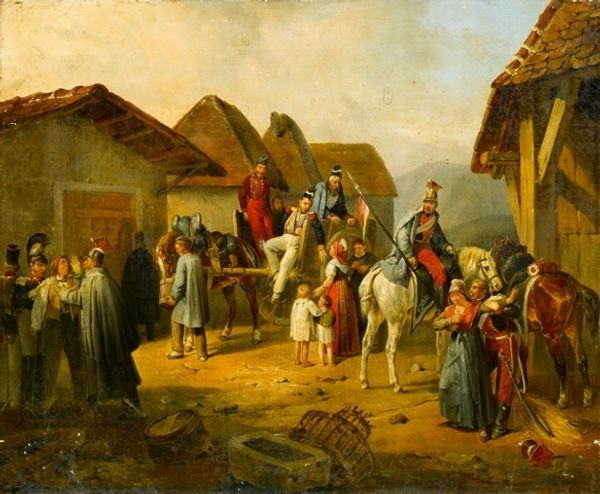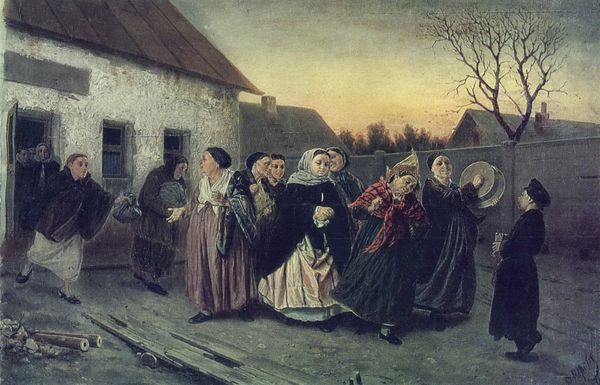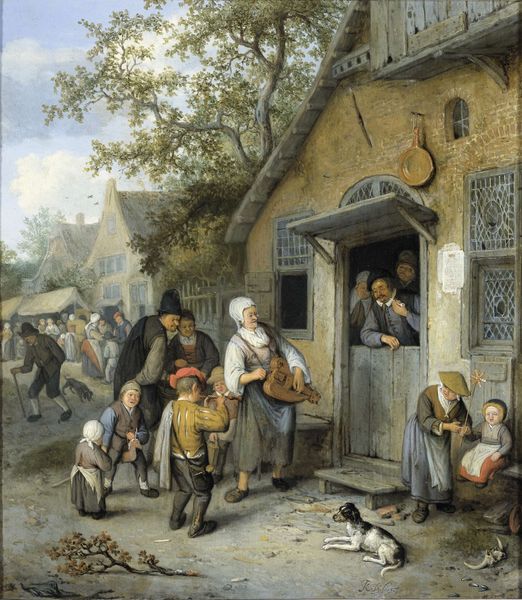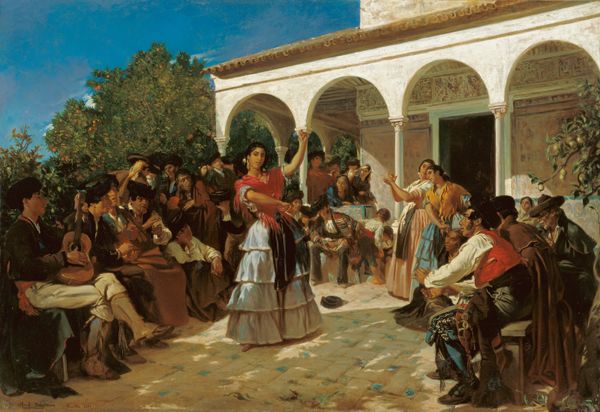
Copyright: Public Domain: Artvee
Curator: Editor: So here we have Ferdinand Georg Waldmüller’s "The Farewell of the Bride from her Parents’ Home," an oil painting from 1860. It's really quite a scene; I'm immediately drawn to the sheer number of figures and how their clothing distinguishes them. What catches your eye? Curator: I'm drawn to how Waldmüller meticulously represents the fabric and clothing of each person. The textural difference between the coarse wool of the villagers’ garments and the smoother textiles worn by the family – observe the detail in the bride’s mother’s dress. What does this say about class and material consumption in 19th-century Austria? Editor: So you're saying the materials used in their clothes give a glimpse into their economic standing and possibly the labor practices that produced them? Curator: Precisely! Waldmüller's realism extends beyond mere aesthetics. Look at the detail in the worn surfaces of the buildings and the implements that the leaving girl is carring with her - these reveal more about the realities of rural life. How do you think the labor of making, mending, and maintaining these items might reflect the community's values and the economic cycle within it? Editor: It seems to highlight a self-sufficiency, a connection to the land, and a whole lot of manual labor. I hadn't considered how deeply these objects speak to the social context. It makes you think about how much work went into their way of life! Curator: Absolutely. These details challenge a purely aesthetic appreciation of the painting. By examining the materials and the visible traces of labor, we uncover the social dynamics embedded within this farewell scene. Editor: I see how this approach connects what’s on the canvas to broader historical and social realities. I’ll never look at historical paintings the same way. Curator: Nor should you. Understanding the materiality opens up a world of untold narratives in any artwork.
Comments
No comments
Be the first to comment and join the conversation on the ultimate creative platform.
